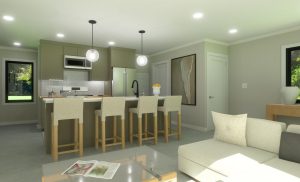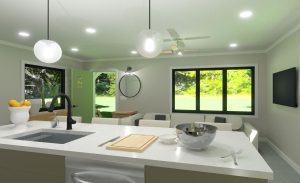As the world population continues to rise, so does the need for housing. In recent years, we have seen an incline of the construction of massive housing units put in place of what used to be forests, and this has a negative impact on our natural environment. To best optimize land usage and preservation and avoid this process of deforestation, vertical housing could be a great solution for you!
Vertical housing refers to residential buildings that are designed to accommodate multiple dwelling units on top of each other. Whether you are considering building a high-rise building or simply want to add a vertical addition to your pre-existing home, this type of housing arrangement is a popular choice that offers residents a compact living environment and efficient use of limited land.
Here are five advantages of vertical housing that we think you should know about:
- Maximizes Land Use: Vertical housing maximizes and allows for more efficient use of limited urban land by stacking residential units on top of each other, rather than laying them horizontally. Vertical housing makes it possible to house a higher population density in a smaller footprint, unlike horizontal housing which requires a lot more land per unit.
- Reduces Urban Sprawl: Urban sprawl is the rapid and uncontrolled expansion of cities and towns which is mainly caused by the need to accommodate the rising population within those areas. Vertical housing helps curb urban sprawl by promoting upward built developments instead of outwards. Since vertical buildings usually only take up a small piece of land, this can help preserve the agriculture on the outskirts of cities and save the trees from being cut down to build more houses.
- Panoramic Views: Vertical housing often offers panoramic views that can’t be beat! Along with the impeccable views of the surrounding area, vertical housing also allows for more natural sunlight to shine through your interior space and create a brighter and more comfortable atmosphere in your home.
- Access to Amenities: Vertical housing developments often feature fun amenities such as rooftop gardens and lounges areas, swimming pools, fitness centers, and other communal spaces. In traditional horizontal housing spaces, these amenities may not be as attainable.
- Sustainable Design: Designers and architects have created innovative vertical housing designs that can incorporate sustainable design features such as green roofs, rainwater harvesting systems, and energy-efficient appliances. Green roofs are essentially a layer of vegetation planted on top of a waterproofing system and have many ecological benefits such as purifying air, reducing temperatures, and saving energy. These features can be incorporated more easily in vertical housing compared to low-rise horizontal developments and they contribute to the environment as a whole.
Overall, vertical housing is a great solution to the rapid rise in population and it offers many advantages in terms of sustainability, efficiency, and the quality of life for the people that reside in these urban areas. Check out our own vertical housing design, the Juniper Tiny Home and the Tupelo Tiny Home, which can be built as a three story Accessory Dwelling Unit (ADU) attached to your house or as a stand-alone home.
If you are considering vertical housing of your own and would like professional architectural advice, consider booking a consultation with Amy, here!



